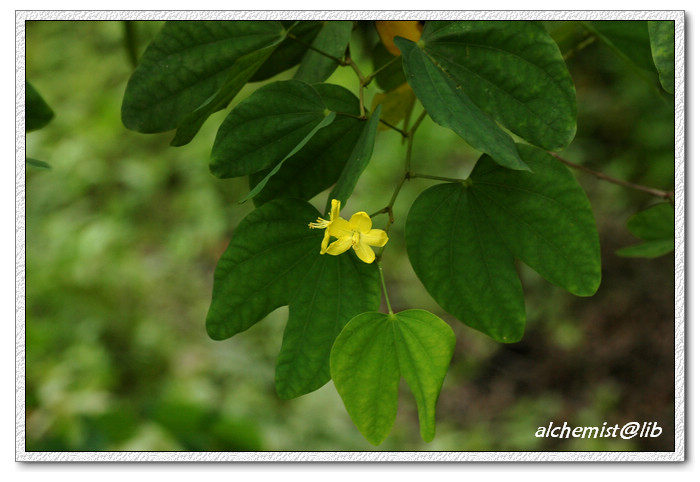- Scientific Name: Bauhinia viridescens Desv.
- Ref: Ann. Sci. Nat. (Paris) 9:429. 1826
- Synonyms: Bauhinia baviensis Drake; B. fusifera C.E.C.Fisch.; B. laui Merr.; B. polycarpa Wall. ex Benth.; B. timorana Decne.; B. viridescens var. laui (Merr.) T.C.Chen
- English Common Name: green bauhinia
- Chinese Common Name: 绿花羊蹄甲 lǜhuā yángtíjiǎ
- Family: Fabaceae
- Genus: Bauhinia
- Distribution: Open forests; low elevations. Hainan, Yunnan [Cambodia, Laos, Malaysia, Myanmar, Vietnam].
- Photo: 06/21/2009, South China Botanical Garden, Guangdong
Shrubs or small trees, to 3 m tall, dioecious. Young branches pubescent; older branches whitish. Stipules narrowly triangular and tapering, ca. 2 mm; petiole 2-3.5 cm; leaf blade suborbicular, 5-9 × 6-10 cm, papery, abaxially pubescent, adaxially glabrous, primary veins 7-9, base truncate or shallowly cordate, apex bifid to 1/2, lobes obtuse at apex. Inflorescence a raceme, 4-8 cm, 10-15-flowered, opposite with leaves; bracts 2-3 mm, pubescent. Flower buds narrowly fusiform, 6-10 mm. Hypanthium turbinate, short. Calyx spathe open on one side. Petals greenish white, obovate-lanceolate, 7-12 mm, shortly clawed. Male flower: fertile stamens 10 in 2 whorls, subequal, ca. 10 mm; anthers oblong, 1-2 mm. Female flower: reduced stamens present; ovary shortly stalked, 6-8 mm; style short; stigma peltate, small. Legume straight or slightly curved, linear, compressed, 5-7 × 0.7-1 cm, beaked; valves leathery, glabrous. Seeds 6-10, green, ellipsoid, slightly compressed, ca. 3 mm in diam. Fl. Mar-Jul, fr. May-Jan. (Flora of China)
